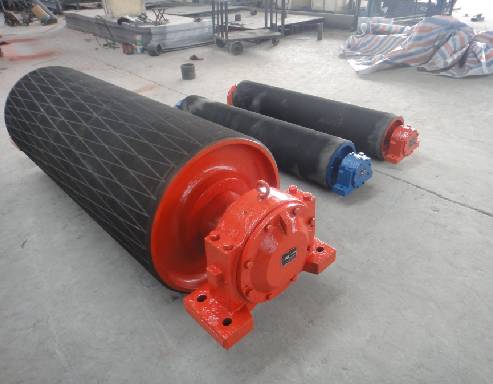 Afrikaans
Afrikaans  Albanian
Albanian  Amharic
Amharic  Arabic
Arabic  Armenian
Armenian  Azerbaijani
Azerbaijani  Basque
Basque  Belarusian
Belarusian  Bengali
Bengali  Bosnian
Bosnian  Bulgarian
Bulgarian  Catalan
Catalan  Cebuano
Cebuano  Corsican
Corsican  Croatian
Croatian  Czech
Czech  Danish
Danish  Dutch
Dutch  English
English  Esperanto
Esperanto  Estonian
Estonian  Finnish
Finnish  French
French  Frisian
Frisian  Galician
Galician  Georgian
Georgian  German
German  Greek
Greek  Gujarati
Gujarati  Haitian Creole
Haitian Creole  hausa
hausa  hawaiian
hawaiian  Hebrew
Hebrew  Hindi
Hindi  Miao
Miao  Hungarian
Hungarian  Icelandic
Icelandic  igbo
igbo  Indonesian
Indonesian  irish
irish  Italian
Italian  Japanese
Japanese  Javanese
Javanese  Kannada
Kannada  kazakh
kazakh  Khmer
Khmer  Rwandese
Rwandese  Korean
Korean  Kurdish
Kurdish  Kyrgyz
Kyrgyz  Lao
Lao  Latin
Latin  Latvian
Latvian  Lithuanian
Lithuanian  Luxembourgish
Luxembourgish  Macedonian
Macedonian  Malgashi
Malgashi  Malay
Malay  Malayalam
Malayalam  Maltese
Maltese  Maori
Maori  Marathi
Marathi  Mongolian
Mongolian  Myanmar
Myanmar  Nepali
Nepali  Norwegian
Norwegian  Norwegian
Norwegian  Occitan
Occitan  Pashto
Pashto  Persian
Persian  Polish
Polish  Portuguese
Portuguese  Punjabi
Punjabi  Romanian
Romanian  Russian
Russian  Samoan
Samoan  Scottish Gaelic
Scottish Gaelic  Serbian
Serbian  Sesotho
Sesotho  Shona
Shona  Sindhi
Sindhi  Sinhala
Sinhala  Slovak
Slovak  Slovenian
Slovenian  Somali
Somali  Spanish
Spanish  Sundanese
Sundanese  Swahili
Swahili  Swedish
Swedish  Tagalog
Tagalog  Tajik
Tajik  Tamil
Tamil  Tatar
Tatar  Telugu
Telugu  Thai
Thai  Turkish
Turkish  Turkmen
Turkmen  Ukrainian
Ukrainian  Urdu
Urdu  Uighur
Uighur  Uzbek
Uzbek  Vietnamese
Vietnamese  Welsh
Welsh  Bantu
Bantu  Yiddish
Yiddish  Yoruba
Yoruba  Zulu
Zulu snub pulley in belt conveyor
The Role of Snub Pulley in Belt Conveyors
Belt conveyors are an integral component of many industries, facilitating the efficient transport of materials across various distances. Among the various components that ensure the smooth operation of a belt conveyor system, the snub pulley plays a critical role. This article delves into the function, importance, and operational aspects of the snub pulley in belt conveyors.
Understanding the Snub Pulley
A snub pulley is a type of pulley used in belt conveyor systems to alter the direction of the conveyor belt and increase the belt's wrap around the drive pulley. This increase in contact area enhances the friction between the belt and the drive pulley, which is crucial for belt tension and overall performance. The snub pulley is typically positioned at an angle along the return section of the conveyor belt and helps in directing the belt towards the drive unit.
Functions of a Snub Pulley
1. Enhancing Friction By increasing the angle of contact between the belt and the drive pulley, the snub pulley contributes to improved friction. This is vital for stopping slippage, especially in scenarios involving heavy loads or inclined belts. Improved friction ensures that the belt maintains its grip on the drive pulley, allowing for efficient power transfer.
2. Adjusting Belt Tension The snub pulley also plays a critical role in adjusting the tension of the conveyor belt. Proper tension is essential for preventing belt sagging, which can lead to operational issues such as misalignment or excessive wear. The snub pulley helps maintain the necessary tension, ensuring that the belt operates smoothly.
3. Directing the Belt The snub pulley can also assist in directing the belt onto the drive pulley, ensuring that it remains aligned during operation. Misalignment can cause premature wear on the belt and other components, and the snub pulley helps mitigate these risks.
snub pulley in belt conveyor

4. Facilitating Maintenance In some designs, the snub pulley can provide an access point for maintenance tasks. As it is positioned away from the primary drive, operators can often perform checks and maintenance without needing to disrupt the entire conveyor system.
Design Considerations
When designing a belt conveyor system, the selection of the snub pulley is crucial. Factors such as the size, material, and placement of the snub pulley must be considered to optimize its performance. Typically made from robust materials capable of withstanding wear and tear, the snub pulley should be designed to handle the specific loads and operational conditions of the application.
Operational Efficiency
The efficiency of a belt conveyor system is heavily influenced by the efficacy of its components. The snub pulley, while a seemingly small part of the entire system, has a significant impact on operational efficiency. Properly functioning snub pulleys lead to reduced slip and improved power transmission, while also minimizing excess wear on both the belting and the pulleys.
Conclusion
In summary, the snub pulley is a vital component of belt conveyor systems, contributing to enhanced performance through increased friction, tension adjustment, directional guidance, and maintenance facilitation. Understanding the importance of the snub pulley allows engineers and operators to design more effective conveyor systems, ensuring that they operate efficiently and sustainably. As industries continue to adopt advanced systems for material handling, the relevance of features like the snub pulley will only continue to grow, underscoring the need for attention to detail in conveyor design and operation.
-
Revolutionizing Conveyor Reliability with Advanced Rubber Lagging PulleysNewsJul.22,2025
-
Powering Precision and Durability with Expert Manufacturers of Conveyor ComponentsNewsJul.22,2025
-
Optimizing Conveyor Systems with Advanced Conveyor AccessoriesNewsJul.22,2025
-
Maximize Conveyor Efficiency with Quality Conveyor Idler PulleysNewsJul.22,2025
-
Future-Proof Your Conveyor System with High-Performance Polyurethane RollerNewsJul.22,2025
-
Driving Efficiency Forward with Quality Idlers and RollersNewsJul.22,2025





























